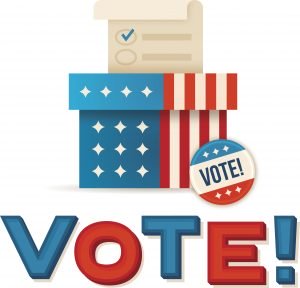While there has been no shortage of reading material for copyright scholars and nerds during the prolonged pandemic pause, one opinion out of the Second Circuit stands out like a bandaged and bloodied thumb. The opinion is the brainchild of a brilliant jurist, and the analysis accurately addresses almost all questions at issue. But, one of the crucial conclusions reached was the wrong one, one that harkens back to the jurist’s earlier work, and one that will no doubt wreak havoc on artists trying to bring meritorious claims against evasive copyright infringers.
In Joseph Sohm v. Scholastic, Inc., a photographer sought to vindicate his rights in 89 photographs that he licensed to a book company. The book company completely disregarded the scope of the license and exploited the photographs in far more books than was agreed.
This was one of those copyright cases where it was almost undisputed that the artist’s infringement claim was meritorious, and the infringers’ attorneys were left scurrying for a loophole to slither through in order for their corporate client to avoid making proper payment to the artist.
And, with the aid of the Second Circuit, they found one. The license that allowed Scholastic to include Sohm’s photographs in its books was executed in 2004. Sohm, who was not privy to Scholastic’s sales records, did not discover Scholastic’s infringement for many years, at which point he filed his 2016 lawsuit.
In general, the Copyright Act’s statute of limitations is three years, and the clock starts running when the artist discovers (or reasonably should have discovered) the infringement. This “discovery rule” has been the law for a very long time, and was confirmed again by the Second Circuit in 2014 in Psihoyos v. John Wiley & Sons, Inc.
Scholastic, though, saw an opening. Seizing on dicta from the Supreme Court’s six-year-old Petrella v. Metro-Goldwyn-Mayer decision, Scholastic argued that Sohm’s damages should be limited to only those that accrued within the three years before he filed his complaint.
The Petrella opinion states that “‘[u]nder the [Copyright] Act’s three-year provision, an infringement is actionable within three years, and only three years, of its occurrence,” and that “the infringer is insulated from liability for earlier infringements of the same work.” Scholastic argued that Sohm should not be able to seek damages for the entirety of its infringement because it was “insulated” from damages flowing from any infringement that took place more than three years before the filing of the complaint. If the Second Circuit bought the argument, Sohm would be denied many years of rightful payments.
Most observers saw little chance of Scholastic’s argument succeeding. It was not a particularly creative or persuasive position, and it had been tossed up to check its sticking power by numerous infringers’ counsel since Petrella was announced in 2014. Almost every court to consider the argument rejected it as sounding as dicta, because as the court in Grant Heilman Photography, Inc. v. McGraw-Hill Companies, Inc. concluded, Petrella “was a case about laches, and the holding is limited to that issue.” Indeed, courts from New York, in PK Music Performance, Inc. v. Timberlake to Kentucky, in Mitchell v. Capitol Records, LLC, to Illinois, in Panoramic Stock Images, Ltd v. McGraw-Hill Glob. Educ. Holdings, LLC, and beyond all rejected the argument Scholastic made to the Second Circuit. Indeed, the cited dicta had only the most attenuated relationship to the actual issue before the Petrella court, which was whether laches is a viable defense in a copyright infringement case. (It isn’t.)
To be sure, Scholastic itself lost this very same argument last last year in another case, Menzel v. Scholastic, Inc., in the Northern District of California, with the court expressly rejecting the position Scholastic tried again at the Second Circuit.
The argument also seemed doomed because in Petrella it was undisputed that the plaintiff filed her suit more than three years after she discovered the infringement, so the “discovery rule,” which allows full recovery by an artist who files her suit less than three years after she discovers the infringement, even if the infringement commenced more than three years ago, had no place in the analysis. In other words, Petrella was limited to the three-year window simply because she discovered her claim more than three years before filing her complaint. To be sure, the Supreme Court endorsed a copyright owner waiting years or decades to file so that “she can estimate whether litigation is worth the candle.” And Petrella never even sought damages outside of the three-year window.
Sohm presented the other side of the coin, as there was no evidence that Sohm had discovered his claims more than three years before filing. Thus, per the discovery rule, he should have been accorded the right to seek all damages related to the infringement. The Ninth Circuit, in Polar Bear Products v. Timex Corp. rejected any limitations on damages in similar circumstances, adroitly noting that “[i]t makes little sense … to bar damages recovery by copyright holders who have no knowledge of the infringement, particularly in a case … in which much of the infringing material is in the control of the defendant.”
Yet, the Second Circuit took the bait, with the Honorable Richard J. Sullivan concluding that Sohm’s claim for damages was limited to the three years before filing the complaint. It noted Petrella held that damages “outside the three-year window” before the complaint’s filing could not be recovered, and that Petrella’s “plain language explicitly dissociated the Copyright Act’s statute of limitations from its time limit on damages.”
This seems erroneous. As discussed, it was undisputed that Petrella was aware of the infringement more than three years before she filed her complaint. Sohm was not. Thus, she could not recover beyond the three-year window, but he, per the discovery rule, could so recover.
And the “three-year window” discussed in Petrella simply referenced the default language in the Copyright Act, with said discussion expressly excluding the impact of the “discovery rule.” This rule, by its very nature, expands that window. It also takes a tortured reading to conclude that Petrella “explicitly dissociated” the statute of limitations from damages. Petrella addressed the laches defense and took no position on how the statute of limitations affected damages for those who discover the infringement within three years of filing their complaint.
One of Sullivan’s former S.D.N.Y. colleagues, in PK Music Performance, Inc. v. Timberlake, rejected this same argument, noting that Petrella simply recognized the injury rule and that it later acknowledges, in a footnote, that “nine Courts of Appeals have adopted, as an alternative to the incident of injury rule, a ‘discovery rule[.]’” Petrella then expressly held that it was not deciding the question of which rule should be applied. As such, it is simply not possible to read Petrella to require a three-year limitation on damages when applying the discovery rule.
Thus, the discovery rule should still stand and allow recovery of damages for infringing acts that occurred more than three years before the filing of the complaint in cases where the artist files her complaint within three years of the infringement’s discovery. Yet, Sohm creates a right without a remedy by precluding damages for those earlier acts that the discovery rule allows to be prosecuted.
Indeed, the Second Circuit strangely reads Petrella’s “analysis” of the discovery rule to allow only what is already allowed under the default language of the Act — three years of damages — and fails to acknowledge that the entire point of the discovery rule is to allow infringement to be prosecuted in full when discovered later than three years from its commencement.
In attempting to ascertain how the Second Circuit mishandled this issue, with a decision that places it in conflict with its own precedent and the precedent of other circuit courts, we may be wise to look at the personnel involved.
In Papazian v. Sony Music Corp., Sullivan, then sitting as a district court judge, was one of the vanishingly few judges persuaded by this three-year limitation argument. The reasoning in Papazian is opaque, but Sullivan there concluded that the Supreme Court’s references in Petrella to the “discovery rule” were dicta while the three-year limitation language was not.
Years later, Sullivan, now elevated to the Second Circuit, and via a twist of fate, ends up deciding this same question in Sohm. Consistent with his Papazian decision, he again holds that Petrella’s decision on laches should be expanded to address claims unrelated to laches and should limit damages for both those plaintiffs that earlier knew of the infringement (like Petrella) and those that did not (like Sohm).
By the numbers, Sohm was massively unfortunate to draw the only judge on the Second Circuit who had previously adopted this position. There is currently a petition for rehearing pending, which should be granted to rectify the apparent flaws in the panel decision. If not, the Supreme Court may be asked to clarify Petrella and address the conflict created by the Second Circuit’s new “three-year lookback” rule.
 Scott Alan Burroughs, Esq. practices with Doniger / Burroughs, an art law firm based in Venice, California. He represents artists and content creators of all stripes and writes and speaks regularly on copyright issues. He can be reached at scott@copyrightLA.com, and you can follow his law firm on Instagram: @veniceartlaw.
Scott Alan Burroughs, Esq. practices with Doniger / Burroughs, an art law firm based in Venice, California. He represents artists and content creators of all stripes and writes and speaks regularly on copyright issues. He can be reached at scott@copyrightLA.com, and you can follow his law firm on Instagram: @veniceartlaw.




 Jill Switzer has been an active member of the State Bar of California for over 40 years. She remembers practicing law in a kinder, gentler time. She’s had a diverse legal career, including stints as a deputy district attorney, a solo practice, and several senior in-house gigs. She now mediates full-time, which gives her the opportunity to see dinosaurs, millennials, and those in-between interact — it’s not always civil. You can reach her by email at
Jill Switzer has been an active member of the State Bar of California for over 40 years. She remembers practicing law in a kinder, gentler time. She’s had a diverse legal career, including stints as a deputy district attorney, a solo practice, and several senior in-house gigs. She now mediates full-time, which gives her the opportunity to see dinosaurs, millennials, and those in-between interact — it’s not always civil. You can reach her by email at 


 Ellen Trachman is the Managing Attorney of
Ellen Trachman is the Managing Attorney of 


 Scott Alan Burroughs, Esq. practices with
Scott Alan Burroughs, Esq. practices with 





